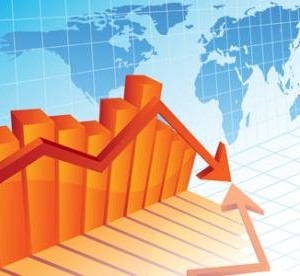 Extreme volatility is not a sign of health for financial markets. But in 2010 financial markets around the globe are experiencing unprecented volatility. Why? It is because the entire world financial system has been gripped by fear. In today’s crazed environment, it seems like just about anything can set off a major panic. In fact, these days politicians have to be extremely careful about what they say about their national finances, because saying the wrong thing can literally send world markets into violent convulsions. For instance, when a senior Hungarian official said that the Hungarian economy was in a “very grave situation” last week it sent world financial markets into a tailspin. Panic was everywhere and everyone was talking about how Hungary could be the “next Greece”. Of course on Monday Hungarian officials backed away from that comment and tried to reassure world markets that everything was fine, but the damage had been done.
Extreme volatility is not a sign of health for financial markets. But in 2010 financial markets around the globe are experiencing unprecented volatility. Why? It is because the entire world financial system has been gripped by fear. In today’s crazed environment, it seems like just about anything can set off a major panic. In fact, these days politicians have to be extremely careful about what they say about their national finances, because saying the wrong thing can literally send world markets into violent convulsions. For instance, when a senior Hungarian official said that the Hungarian economy was in a “very grave situation” last week it sent world financial markets into a tailspin. Panic was everywhere and everyone was talking about how Hungary could be the “next Greece”. Of course on Monday Hungarian officials backed away from that comment and tried to reassure world markets that everything was fine, but the damage had been done.
It was a perfect example of the spirit of irrational fear that has gripped the financial world.
After all, even if Hungary did fall apart financially, it wouldn’t plunge the rest of the world into a depression.
And the truth is that Hungary is not really in that bad shape financially. Hungary’s budget deficit is about half the size of the Greek budget deficit and Hungary doesn’t even use the euro.
But now investors all over the world are constantly scanning the news for the latest piece of information that will send waves of panic through the markets.
In the current environment, fear is what moves the markets.
The reality is that fear is the reason why the euro is plunging at breathtaking speed.
Are many of the economies in Europe truly in really bad shape?
Of course.
However, it could be argued that the economies of the U.S. and Japan are in even worse shape in many ways. Japan’s gross public debt has reached 201 percent of GDP and the United States has piled up the biggest mountain of debt in the history of the world.
But because of the extreme fear that has been generated, people are moving out of the euro and into dollars and yen.
In fact, the euro is probably headed even lower.
GFT Forex’s Boris Schlossberg believes that the euro could fall down to the 1.16/1.17 range before this current panic is over….
“I think we run the risk of seeing 1.16/1.17 before the next selling phase dies down. The euro is just absolutely hated here. The European rescue package still faces some regional opposition. There were rumors the German high court could rule it was unconstitutional. They don’t have a federal mechanism to put it in place, and there’s worries that at any point in time, the rescue package could be sabotaged.”
But all of this fear and panic is actually good for investors in gold and silver.
Why?
Because during times of fear and panic investors look to move their money into something that is secure, and gold and silver have been secure investments for thousands of years.
So in this environment of fear, gold is absolutely soaring. On Monday, the price of gold climbed 1.9 percent to $1239.30 per ounce. That was the largest one day rise in the price of gold since February 16th.
So how high will gold go?
Well, the truth is that nobody knows.
But if fear and panic continue to grip world financial markets in the months ahead, there is really no telling how high it could go.
In fact, even many mainstream financial analysts are becoming extremely bullish on gold.
As Dan Burrows of Daily Finance recently commented, “you don’t have to be a member of the build-a-bunker-in-Montana crowd to believe gold could hit $2,500 in the next couple of years.”
But these days no investment is truly safe. One really bad rumor these days can send any stock, any currency or any commodity into a tailspin.
Fear is everywhere. Governments and central banks are intervening in the markets in unprecedented ways, but it is still not enough to keep the markets from flopping around like a dying fish.
So for those who are waiting for the financial markets to get back to “normal”, you are likely to be waiting for quite a long time. The world economic situation is not going to be getting any better in the long-term. So if financial markets are flipping out this much even now, just wait and see what happens when things really start falling apart.



